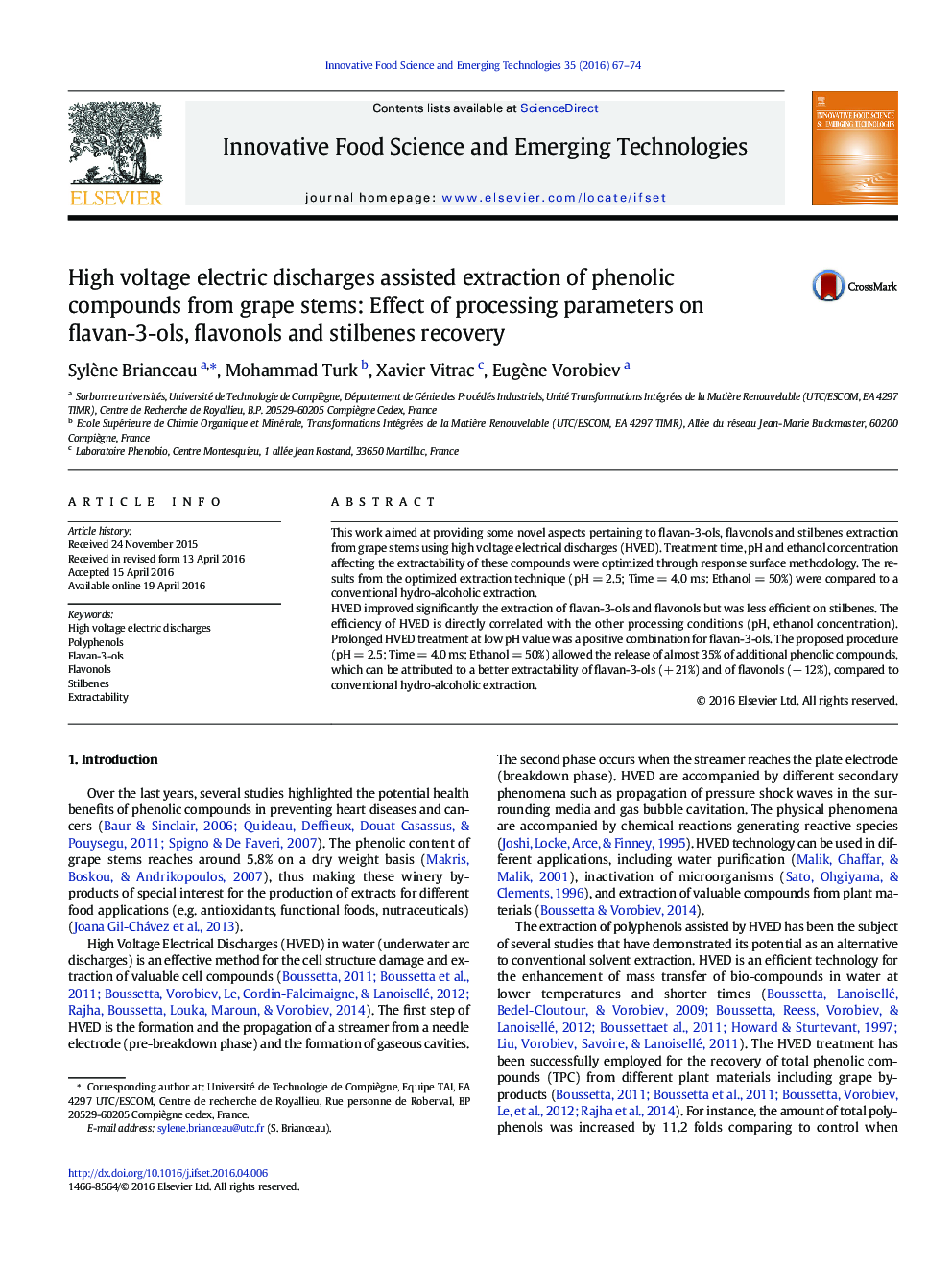| Article ID | Journal | Published Year | Pages | File Type |
|---|---|---|---|---|
| 2086258 | Innovative Food Science & Emerging Technologies | 2016 | 8 Pages |
•Electrical discharges are applied on grape stems for polyphenol extraction.•The effects of treatment time, ethanol concentration and pH are studied.•HVED improves significantly the extraction of TPC, flavan-3-ols and flavonols.•The efficiency of HVED depends on the other processing conditions.
This work aimed at providing some novel aspects pertaining to flavan-3-ols, flavonols and stilbenes extraction from grape stems using high voltage electrical discharges (HVED). Treatment time, pH and ethanol concentration affecting the extractability of these compounds were optimized through response surface methodology. The results from the optimized extraction technique (pH = 2.5; Time = 4.0 ms: Ethanol = 50%) were compared to a conventional hydro-alcoholic extraction.HVED improved significantly the extraction of flavan-3-ols and flavonols but was less efficient on stilbenes. The efficiency of HVED is directly correlated with the other processing conditions (pH, ethanol concentration). Prolonged HVED treatment at low pH value was a positive combination for flavan-3-ols. The proposed procedure (pH = 2.5; Time = 4.0 ms; Ethanol = 50%) allowed the release of almost 35% of additional phenolic compounds, which can be attributed to a better extractability of flavan-3-ols (+ 21%) and of flavonols (+ 12%), compared to conventional hydro-alcoholic extraction.
